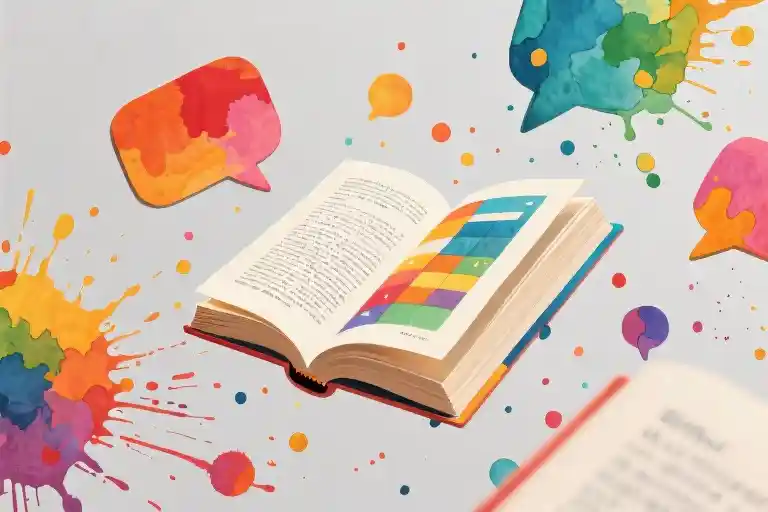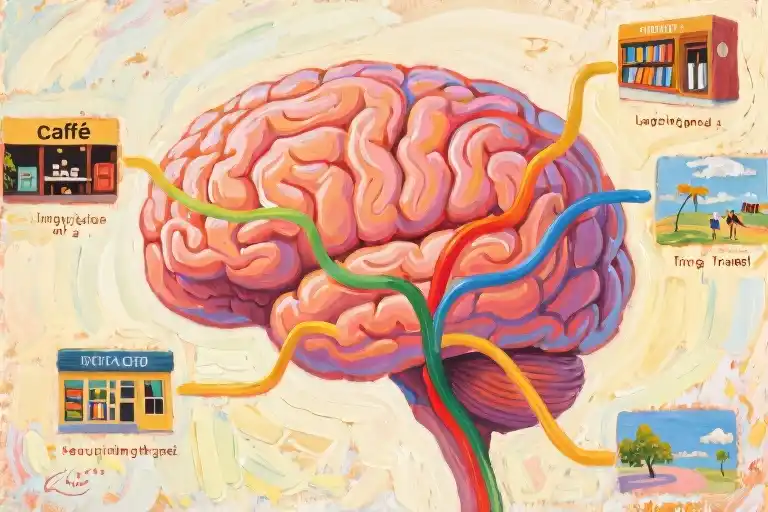We’ve all been there – mid-conversation when someone drops a word that makes you pause. “Wait,” you say, “is ‘unfriend’ even a real word?” Suddenly it’s a linguistic standoff, with both parties reaching for their phones to consult the ultimate arbiter: the dictionary. That thick volume (or these days, that search bar) holds the power to declare lexical legitimacy with a single entry.
But here’s the rub: dictionaries aren’t omniscient language gods. They’re more like meticulous archivists, cataloging words that have already earned their stripes in the wild. When Merriam-Webster added “unfriend” in 2009, Facebook users had been casually unfriending each other for years. The dictionary wasn’t creating reality; it was catching up to it.
This gap between how we actually use language and what gets officially recognized reveals something fundamental about words. Their validity doesn’t come from dictionary editors’ approval, but from their ability to do real work in our conversations. A word becomes “real” when it consistently conveys meaning between people – whether it’s tech slang like “ghosting,” workplace jargon like “circle back,” or that regional expression your family uses that somehow isn’t in any reference book.
Over the next sections, we’ll explore this tension between dictionary authority and living language. We’ll examine how linguists determine wordhood beyond printed pages, track examples of vocabulary evolving faster than reference books can document, and ultimately equip you with tools to navigate these gray areas in your own writing and speech. Because when it comes to language, the most interesting developments often happen outside the margins of any official volume.
The Dictionary Dilemma: Authority and Its Limits
We’ve all been there—mid-conversation, you drop a word like “hangry” or “adulting,” only to have someone scoff and demand, “That’s not a real word.” The immediate reflex? Grab the nearest dictionary. For generations, dictionaries have served as the ultimate arbiters of lexical legitimacy, their hallowed pages deciding what counts as “proper” language. But this authority comes with invisible fine print.
Dictionaries aren’t linguistic lawbooks; they’re cultural time capsules. When the Oxford English Dictionary adds “post-truth” or “hygge,” it’s not granting permission—it’s acknowledging what millions of speakers already adopted. Lexicographers function more like anthropologists than judges, documenting how words live in the wild rather than prescribing how they should behave. The 2020 pandemic made this painfully clear: while “social distancing” dominated global conversations, most dictionaries took months to formally define it.
This lag isn’t negligence—it’s inherent to the process. Consider the journey of “meme.” Richard Dawkins coined it in 1976, but the internet-era meaning didn’t appear in Merriam-Webster until 2015. By then, your grandma had probably shared at least three cat memes. Dictionary updates operate on geological time compared to language’s lightning-fast evolution, especially with digital communication spawning terms like “ghosting” or “doomscrolling” overnight.
The selection process itself reveals deeper biases. Ever noticed how “ain’t” gets branded “nonstandard” while equally informal contractions like “gonna” slip through? Editorial boards—still predominantly academic and Western—prioritize certain vocabularies over others. African American Vernacular English terms like “finna” took decades to gain dictionary recognition despite centuries of use. Even now, tech jargon enters faster than indigenous loanwords.
Yet we keep treating dictionaries like linguistic bouncers, checking IDs at the language club door. Maybe it’s time to ask: when a word communicates meaning effectively across dinner tables and Twitter threads, doesn’t that make it “real” regardless of ink on a page? The dictionary isn’t wrong—it’s just one chapter in an endless story we’re all writing together.
The Three Linguistic Standards for Word Validity
We’ve all been there—mid-conversation, you drop a word like ‘hangry’ or ‘adorkable,’ only to be met with that skeptical eyebrow raise. “That’s not a real word,” your friend declares, reaching for the dictionary. But here’s the thing linguistics teaches us: dictionary inclusion is just one piece of the wordhood puzzle. There are three far more interesting ways to measure a word’s legitimacy.
Communicative Function: Does It Work in the Wild?
The first test is straightforward: does this collection of letters or sounds actually communicate meaning between people? Take ‘ghosting’—that modern phenomenon of disappearing from someone’s digital life without explanation. Long before Merriam-Webster added it in 2017, everyone from teenagers to HR managers understood exactly what it meant when someone said “He ghosted me after three dates.”
This is how language evolves at ground level. When a term consistently sparks recognition across speakers—whether it’s medical jargon among doctors or gaming slang like ‘noob’—it’s fulfilling language’s primary purpose: effective communication. The test isn’t whether your grandmother understands it, but whether your intended audience does.
Semantic Definiteness: Can You Explain What It Means?
Next comes meaning. Not dictionary-definition precision, but the kind of working understanding that lets people use a word appropriately. Consider ‘adorkable’ (that charming blend of dorky and adorable). You might struggle to craft a textbook definition, but show someone a photo of a puppy wearing oversized glasses, and they’ll nod: “Yeah, that’s totally adorkable.”
This standard explains why nonsense words in Lewis Carroll’s “Jabberwocky” feel different from actual vocabulary. We recognize ‘brillig’ as poetic invention because it lacks that crucial anchor in shared experience. Whereas words like ‘bingeable’ (for TV shows) or ‘zoodle’ (zucchini noodles) quickly develop concrete associations.
Grammatical Behavior: Does It Play by the Rules?
The most technical but fascinating standard examines how a word behaves grammatically. Real words integrate into a language’s systems—they take prefixes or suffixes, change forms, or shift grammatical roles. Watch what happened when ‘Google’ transitioned from trademark to verb: we started saying “I’ll Google it,” “She’s Googling,” even “That’s so Googleable.”
This explains why some invented words gain traction while others fade. ‘Staycation’ (stay + vacation) succeeded because it followed English’s blending patterns, while forced acronyms often fail unless they develop verb forms (like ‘laser’ from “light amplification by stimulated emission of radiation”).
The Living Proof in Your Daily Life
These standards aren’t abstract theories—they’re visible in how you actually use language. That slang term your coworkers adopted last month? If it’s serving a communication need, expressing something definable, and fitting grammatical patterns, congratulations: you’re witnessing word birth. The dictionary will catch up eventually, but linguistics shows us we don’t need to wait for its stamp of approval.
Language Changes in Real Time
We often treat dictionaries as timeless authorities, but flip through different editions and you’ll notice something fascinating—words come and go, meanings shift, and grammar rules bend. The evolution of ‘they’ as a singular pronoun tells this story perfectly. While some still argue it’s grammatically incorrect, major dictionaries like Merriam-Webster and Oxford now recognize this usage, reflecting how language adapts to societal needs.
Video game terminology demonstrates how quickly language moves beyond dictionary pages. Take ‘penta kill’—a term universally understood in gaming communities to describe eliminating five opponents in quick succession. Though absent from most standard dictionaries, its consistent usage, clear meaning, and grammatical structure (it follows established gaming verb-noun patterns like ‘triple kill’) make it linguistically legitimate. The gap between such terms and dictionary recognition highlights an important truth: lexical validity isn’t granted by lexicographers; it’s earned through communal use.
Immigrant communities have long contributed vibrant vocabulary that eventually enters mainstream lexicons. The Spanish-derived ‘bodega’ (a small grocery store) maintained its cultural specificity for decades before appearing in dictionaries. Its journey mirrors how words gain legitimacy: first through practical communication within a group, then gradual acceptance by wider audiences. You’ll find similar patterns with Yiddish words like ‘schmooze’ or Japanese loanwords like ’emoji’—they existed as ‘real words’ within their communities long before dictionary recognition.
What makes these examples fascinating isn’t just their novelty, but how they reveal language’s democratic nature. Dictionaries don’t create words; they document what already exists in the wild. When we track terms like ‘cancel culture’ or ‘contactless’ through Google Ngram Viewer, we see spikes in usage that predate their dictionary entries by years. This linguistic time-lag proves an essential point: you’re not just a language user—you’re part of the committee that decides what counts as ‘real.’
Next time you hear a new term—whether from TikTok, a scientific paper, or your multilingual neighbor—consider its linguistic credentials rather than rushing to check a dictionary. Does it communicate something specific? Does it follow recognizable grammatical patterns? Is it being used consistently? These questions matter more than any publisher’s stamp of approval. After all, today’s obscure slang might be tomorrow’s dictionary headword—and you’ll have witnessed its journey from the very beginning.
Solving Word Disputes: A Practical Guide
We’ve all been there – mid-conversation when someone challenges your use of a word. “That’s not a real word,” they say with unwarranted confidence. Before you resign yourself to linguistic defeat, here’s how to navigate these vocabulary standoffs with actual methodology rather than just reaching for the nearest dictionary.
Step 1: Consult Authoritative Dictionaries (But Know Their Limits)
Start with mainstream dictionaries like Merriam-Webster or Oxford English Dictionary, but treat them as historical records rather than absolute authorities. When checking for “irregardless,” you’ll find it listed in most modern dictionaries with usage notes about its controversial status. This tells you something important – inclusion doesn’t equal endorsement, and exclusion doesn’t equal illegitimacy. Pay attention to the metadata: labels like “nonstandard,” “informal,” or “slang” indicate social acceptance levels rather than objective validity.
Step 2: Dive Into Corpus Linguistics
When dictionaries fail to settle the debate, corpus analysis tools like COCA (Corpus of Contemporary American English) or Google Ngram Viewer provide empirical evidence. Search for “hangry” and you’ll see its usage trajectory spiking dramatically after 2015 across newspapers, blogs, and even academic texts. Frequency matters – if a word appears consistently across multiple contexts over time, it’s functionally real regardless of dictionary status. Pro tip: compare your word’s usage graph with established vocabulary to assess its penetration.
Step 3: Contextual Evaluation
The final test involves situational awareness. Ask:
- Would this word be understood in its intended context? (\”Yeet\” works in gaming streams but not legal briefs)
- Does it fill a lexical gap? (“Staycation” efficiently conveys “vacation at home”)
- Does it follow morphological patterns? (“Adulting” parallels existing gerund formations)
For professional contexts, when in doubt, default to more established terms. But remember – Shakespeare invented over 1,700 words by bending existing rules. Language evolves through use, not decree. Your controversial word today might be dictionary-approved tomorrow, so document your findings and revisit them periodically. The true test of a word’s validity isn’t its presence on a printed page, but its ability to convey meaning between living, breathing humans.
Language in Motion: The Living Nature of Words
Dictionaries sit on our shelves and screens as trusted arbiters, their pages filled with the words we’ve collectively agreed matter. Yet anyone who’s ever argued about whether ‘irregardless’ deserves a place in polite conversation knows these linguistic authorities have limits. The truth is, language doesn’t wait for dictionary editors to catch up – it evolves in real time through our daily conversations, tweets, and texts.
Consider how quickly workplace slang like ‘quiet quitting’ spread through offices before lexicographers could document it. Or how the verb ‘to google’ transitioned from corporate trademark to universal action verb in the span of a few years. These transformations happen not in the hallowed halls of Oxford or Merriam-Webster, but in the messy, beautiful chaos of human interaction.
What makes a word ‘real’ isn’t its appearance between leather-bound covers, but whether it fulfills three essential functions: serving a communicative purpose (people understand what you mean), carrying identifiable meaning (you can explain it to someone else), and following recognizable patterns (it behaves like other words in its category). When teenagers say ‘she yeeted the phone across the room,’ the word may not appear in dictionaries yet, but it clearly meets all three linguistic criteria.
This fluidity presents both challenge and opportunity. While dictionaries provide invaluable snapshots of our language at specific moments, they’re ultimately reactive documents trying to capture an ever-shifting target. The words we use today – from tech terminology to social justice vocabulary – often outpace the official record. That’s why urban dictionaries and online language forums thrive as parallel systems documenting linguistic innovation.
Rather than viewing dictionary omissions as rejections, we might better understand them as time-delayed recognitions. The journey from spoken novelty to dictionary entry involves sustained usage across diverse contexts – what linguists call ‘lexicalization.’ Words like ‘blog’ (1999 coinage, 2004 dictionary entry) and ‘selfie’ (2002 origin, 2013 Oxford Word of the Year) followed this path from fringe to mainstream acceptance.
So the next time someone challenges your word choice because ‘it’s not in the dictionary,’ remember: language belongs to its users, not its archivists. Keep a notebook of interesting new words you encounter – that quirky term your barista uses, the shorthand your gaming friends understand instantly. These are the raw materials of tomorrow’s dictionary entries, proof that our living language continues to grow in wonderfully unpredictable ways.
What emerging word do you think will next make the leap from casual usage to dictionary recognition? Keep listening to the conversations around you – you might be witnessing linguistic history in the making.





